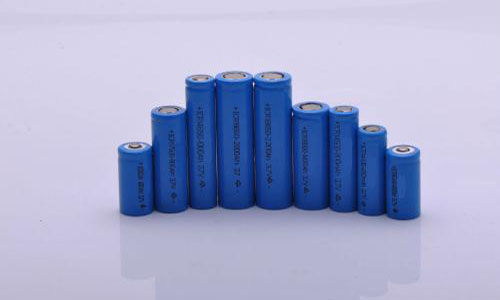Lithium-ion batteries have become the go-to power source for electric vehicles (EVs), energy storage systems, and portable electronics. Among the various types of lithium-ion Battery, Lithium Iron Phosphate (LFP) and Nickel Manganese Cobalt (NMC) stand out. Both have their own advantages and drawbacks depending on the application. In this blog, we will explore the pros and cons of these two battery chemistries to help you understand which one may best suit your specific needs.

LFP Battery (Lithium Iron Phosphate Battery)
LFP Battery is increasingly popular in electric vehicles, energy storage systems, and even portable electronics due to their distinct benefits.
Advantages of LFP Battery
1. High Safety Profile
LFP Battery are known for their high thermal and chemical stability. They are less prone to overheating, thermal runaway, and combustion, making them one of the safest battery chemistries available. This makes them ideal for applications where safety is critical, such as residential energy storage and electric buses.
2. Long Cycle Life
LFP Battery offer a significantly longer cycle life compared to NMC Battery. They can endure around 2,000 to 4,000 charge cycles without significant degradation, sometimes even reaching over 10,000 cycles under optimal conditions. This makes them a long-lasting solution, especially in applications like solar energy storage where frequent cycling occurs.
3. Lower Cost
Lithium iron phosphate is made from relatively inexpensive and widely available materials. This results in a lower overall cost for LFP Battery when compared to NMC Battery, making them a cost-effective choice for budget-conscious projects.
4. Stable Performance
LFP Battery maintain consistent performance even at a wide range of temperatures. They are more resistant to extreme temperatures (both high and low), which improves their reliability in outdoor and industrial applications.
Disadvantages of LFP Battery
1. Lower Energy Density
The energy density of LFP Battery (around 90-160 Wh/kg) is lower compared to NMC Battery, meaning they store less energy for the same weight and size. This makes them less suitable for applications where space and weight are a concern, such as long-range electric vehicles or high-end consumer electronics.
2. Lower Specific Power
While LFP Battery excel in longevity and safety, they have a lower specific power compared to NMC Battery. This means they may not be able to deliver high bursts of power quickly, which could limit their use in certain high-performance applications like high-speed electric vehicles.
NMC Battery (Nickel Manganese Cobalt Battery)
NMC Battery are widely used in electric vehicles (EVs) and other applications requiring a balance of energy density, power output, and longevity.
Advantages of NMC Battery
1. Higher Energy Density
NMC Battery have an energy density typically ranging between 150-250 Wh/kg, significantly higher than LFP Battery. This makes them ideal for applications where weight and space are limited, such as electric cars with long-range requirements. A higher energy density means NMC Battery can provide more power over a longer period, reducing the need for frequent charging.
2. Higher Specific Power
NMC Battery can deliver more power in a shorter amount of time compared to LFP Battery. This makes them suitable for performance-demanding applications, such as acceleration in electric vehicles or in devices that require high bursts of energy.
3. Good Balance of Cost, Performance, and Longevity
NMC Battery offer a balanced combination of cost, energy density, and cycle life. They are versatile and adaptable to many different applications, from automotive to portable electronics, and are widely used in the EV industry.
Disadvantages of NMC Battery
1. Shorter Cycle Life
While NMC Battery generally offer a good balance of performance, their cycle life is shorter than that of LFP Battery. NMC cells typically last between 1,000 and 2,000 cycles, which may make them less suitable for applications that involve frequent charging and discharging.
2. Higher Cost
The presence of cobalt in NMC Battery increases their cost. Cobalt is expensive and often comes from regions with supply chain and ethical sourcing issues. This makes NMC Battery pricier compared to LFP, which relies on more abundant materials.
3. Safety Concerns
NMC Battery are more prone to thermal runaway than LFP Battery, meaning they have a higher risk of overheating and catching fire. This requires additional safety measures, particularly in large battery systems and electric vehicles.
Comparing LFP Battery and NMC Battery: Which One Should You Choose?
The choice between LFP and NMC Battery depends largely on the specific requirements of your application. Here’s a quick breakdown:
· For Electric Vehicles (EVs):
NMC Battery are often the preferred choice due to their higher energy density and specific power, which allows for longer driving ranges and better acceleration performance.
· For Energy Storage Systems (ESS):
LFP Battery shine in applications like solar energy storage where safety, long cycle life, and stability are prioritized over energy density. Their ability to endure frequent charging cycles makes them ideal for home or commercial energy storage solutions.
· For Cost-Sensitive Applications:
LFP Battery are generally cheaper, making them suitable for budget-conscious projects where safety and longevity are more important than high energy density.
Conclusion
Both LFP Battery and NMC Battery have their own strengths and weaknesses, and the choice depends on your specific needs. If safety, cost, and longevity are your primary concerns, LFP Battery are a solid choice. On the other hand, if you need higher energy density and performance, especially in electric vehicles, NMC Battery might be the better option. Understanding the trade-offs will help you make an informed decision for your project or application.
